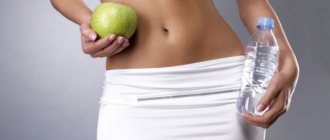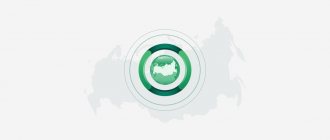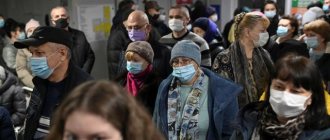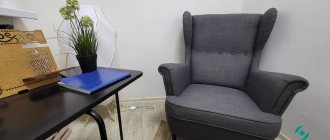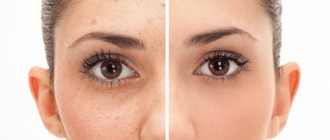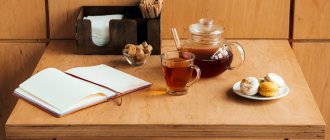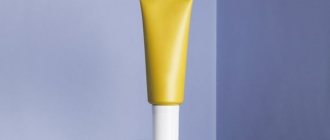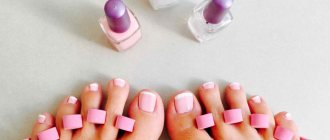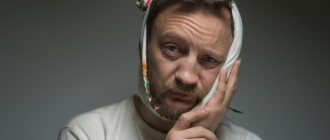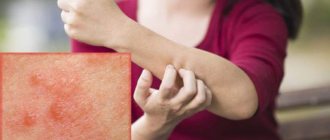Pediculosis - symptoms and treatment
Hospitalization for pediculosis is not carried out except in cases where there are special indications: unfavorable sanitary and hygienic living conditions, inability to independently provide the necessary therapy. Treatment is carried out at home. Isolation of the patient is necessary, as well as anti-epidemic and pest control measures.
Treatment of pediculosis is aimed at destroying the pathogen at all stages of the life cycle. When prescribing treatment, the patient must be explained how to use the drug (method of application, exposure time, frequency of treatments). If the recommendations are not followed, there is a high risk of treatment failure, as well as the development of lice insensitivity to drug therapy. In case of body lice, treatment of patients and their belongings must be carried out by special licensed disinfection organizations. To disinfect premises, furniture, as well as linen, clothing and bedding, pediculicidal agents are used in an aerosol.
Three methods are used in therapy: mechanical, physical and chemical. Additional treatment methods are required if complications develop.
The mechanical method of lice removal is suitable for single individuals. In this case, a special comb with fine teeth is used (the distance between the teeth is 0.2-0.3 mm). How to use:
- Wet and comb your hair to prevent tangling (you can use hair balm or conditioner before doing this).
- Place the comb so that its teeth touch the scalp. Comb all hair at least twice. After each combing, you need to inspect the comb and be sure to treat it with boiling water or a 70% alcohol solution [16].
To make it easier to comb out nits the day before, it is recommended to apply Vaseline oil or a combination preparation containing coconut, anise and ylang-ylang oils to your hair [17].
Evidence evaluating mechanical removal as an alternative to pediculicidal therapy is limited and conflicting.
The physical method involves killing lice using high or low temperatures. To remove nits from clothes and hats, people use boiling laundry and ironing clothes with a hot iron. Items that cannot be washed can be processed in steam-air-formalin, steam and combined disinfection chambers and in air disinfection chambers. These methods are considered quite effective.
The chemical method, or drug treatment of lice, is based on the use of pediculicides - drugs designed to kill lice. There are products in the form of lotions, shampoos, soaps, emulsion concentrates, aerosol products, etc.
Remedies for pediculosis:
1. Pyrethroids:
- Permethrin 1% cream rinse or 5% cream. Sold without a prescription, it is a reasonable first choice drug for the treatment of head lice unless resistance to it has been proven. Apply the product to towel-dried hair and rinse with warm water after 10 minutes. Approved by the FDA (Food and Drug Administration) for the treatment of lice in adults and children over 2 months of age. The drug does not act on nits, therefore, after 7-10 days, repeated treatment is recommended to destroy lice that have not yet hatched at the time of the first treatment. A third treatment on days 13-15 may be required to remove surviving and hatched lice nymphs.
- Pyrethrins/piperonyl butoxide (gel, shampoo, solution for external use) applied to dry hair for 10 minutes may be effective, but there is emerging evidence that lice are resistant to these drugs [18]. In this case, it is recommended to use alternative agents with a different mechanism of action.
2. Organophosphorus compounds (OPS):
- Malathion 0.5% solution. More effective than permethrin. Apply to dry hair and wash off with shampoo after 8-12 hours. Approved by the FDA for the topical treatment of head lice in adults and children over 16-18 years of age. May be recommended if permethrin resistance is suspected. Kills 88% of lice in 10 minutes and 100% of lice in 20 minutes [19].
- Fention. As an active ingredient, it is included in preparations either alone (20%, 24%) or in combination with permethrin (total concentration - 10%, 20%); According to the manufacturers' instructions, the concentration of the working emulsion ranges from 0.1% to 0.25% [20].
3. Benzyl benzoate 20% is included in anti-lice preparations in the form of a spray (exposure time - 30 minutes, single treatment) and in the form of lotion (exposure time - 10 minutes, single treatment). Benzyl alcohol 5% is effective in eliminating live lice. Apply to dry hair for 10 minutes once a week for 2 weeks. FDA approved for the treatment of lice. The most common adverse reactions include itching, erythema (limited redness of the skin) and eye irritation [21].
4. Polydimethylsiloxanes (dimethicones) are synthetic silicone oils that are highly safe and effective against lice. Available in lotion and spray form. Dimethicone blocks the respiratory system of lice, causing them to die. There is evidence that dimethicones are also effective against nits [28]. It is necessary to apply the lotion to dry hair from base to ends and to the scalp, let the hair dry naturally, leave for 8 hours (or overnight), then rinse with regular shampoo. Repeat the course of treatment after 7-10 days. Dimethicones are also used in the form of shampoo containing clearol mineral oil (69.25%). The shampoo is kept for 10 minutes, re-treatment is carried out after 7–10 days [22].
5. Isopropyl myristate (isopropyl myristate) is used in the form of a liquid that contains a mixture of isopropyl myristate (50%) and cyclomethicone (50%). The drug is applied for 10 minutes, after 7-10 days the treatment is repeated [23].
6. Anise and clove essential oils are considered a fairly effective method of treating head lice. They are used in the form of an alcohol lotion and left for 30 minutes. A single treatment is sufficient [24].
Treatment of pregnant and lactating women
For this group of patients, in the case of head lice, it is allowed to prescribe a permethrin solution prepared from a 5% emulsion concentrate in ethanol, or a lotion containing 4% dimethicones.
Treatment of pediculosis in children
Most anti-lice medications are approved for use from 5 years of age. Exception:
- 1% permethrin-based gel is approved for use in children from 1 year of age. The gel is kept for 40 minutes, a single use is enough.
- A drug containing a mixture of malathion and permethrin (0.5% and 1%, respectively) and the synergist piperonyl butoxide (4%) is approved for use from 2.5 years. The drug must be kept for 10 minutes, a single treatment is required.
If you have a concomitant allergic disease (atopic dermatitis), it is recommended to consult a dermatologist for individual selection of the drug.
If eyelashes are damaged, lubricate them with Vaseline 2 times a day for 7-8 days or use eye ointment with physostigmine 2 times a day for 1-2 days.
Treatment of pediculosis complicated by secondary bacterial infection
External therapy is used: drying with any antiseptics (solutions of aniline dyes, povidone-iodine, etc.). Local or systemic antibacterial therapy is administered as prescribed by the doctor.
Oral medications are not FDA approved for the treatment of head lice, but are sometimes used to treat difficult to remove head lice:
- Trimethoprim-sulfamethoxazole 5 mg/kg twice daily in combination with permethrin may increase the cure rate.
- Oral ivermectin 400 mcg/kg, repeat dose after 7 days
It is not recommended for treatment:
- Use Vaseline, vinegar, mayonnaise, butter or margarine, and vegetable oils. Lice are able to close their airways, preventing oily substances from entering them, and open them again when the substance is washed away. Treatment with these substances is not able to kill a significant number of lice [25].
- Blow-drying your hair using hot air can cause lice to become airborne and spread to other people.
- Shaving your head (effective, but not practical)
- Use flammable or toxic substances such as gasoline or kerosene [26].
- Use vinegar, acetone, bleach, vodka and WD-40. These substances negatively affect the hair and scalp and inhibit the therapeutic activity of permethrin.
- Use dye sprays that color insects and nits in bright neon colors. Such products do not kill lice; in addition, they reduce the effectiveness of permethrin. Not recommended by the National Lice Association due to lack of research on safety and effectiveness.
Hygiene in the treatment of lice: daily cleaning of premises, boiling laundry, ironing clothes with a hot iron, disinfecting combs and brushes.
General information
Pediculosis ( lice ) is a disease that is common in all countries of the world. Lice parasitize the human body, feeding on its blood. There are several varieties of lice. They live on the human scalp, can live on underwear and clothing, and also live in the pubic area. In rare cases, lice are also found on other parts of the body where hair grows - on the beard, eyebrows. As the experience of specialists shows, a relatively limited number of lice can live on a person’s body, depending on the amount of his blood. The main nutrients for lice are blood and lymph . Lice bite through the skin and inject saliva into the resulting wound. The saliva of lice may contain various microbes that cause dangerous infectious diseases. So, fever , typhus and other diseases can be transmitted in this way.
After lice bites, a person feels severe itching and scratches the skin at the site of the bites. Lice move by crawling. Pediculosis is transmitted through direct contact with an infected person or after using the patient’s hygiene items. Lice can also crawl from one head to another in places where people are in relatively close contact: on public transport, in a swimming pool, on the beach. Despite the fact that there is an opinion about lice as a social illness that is very closely related to hygiene, to this day the reason for the widespread prevalence of lice among clean people remains unexplored. Thus, scientists have found that lice are more willing to “settle” on a head with clean hair.
Diagnosis of pediculosis
If an itchy rash is found on hairy areas of the body, then pediculosis should be excluded. All persons seeking medical care and undergoing routine medical examinations should be screened for head lice.
The diagnosis of pediculosis is made on the basis of the clinical picture - a visual examination and the results of a parasitological study.
During a visual inspection, adult lice can be seen with the naked eye or a magnifying glass. Insects are easier to spot after they have been drunk on blood. In pubic pediculation, lice appear as gray and brown spots at the root of the hair. Lice are completely motionless, but when they try to tear them off, they show signs of life and cling even more actively to the hair, from which it is very difficult for them to tear themselves away. To separate the lice, you need to pull the tweezers over all the hair. Most likely, there will be nits that are firmly attached to the hair. Nits are sometimes confused with curled hair or hair knots and dandruff in seborrheic dermatitis and dandruff. To confirm the diagnosis, microscopic examination of the hair is necessary.
Differentiated pediculosis requires differentiated pediculosis:
- pyoderma;
- Microbial eczema;
- Neurodermatitis;
- Seborrheic dermatitis;
- Psoriasis;
- contact dermatitis.
Head lice
Head lice are grayish-yellow or transparent insects, their size reaches 4 mm. Head lice always parasitize mainly on the temples and on the back of the head, and from there they penetrate to other areas of the head. Over the course of a month, lice can lay ten nits (that’s what lice eggs are called). After 8-10 days, lice larvae emerge from the nit. After ten to fifteen days, an adult louse grows from the larva, capable of fully laying eggs. A louse can live up to 38 days. Head lice nits are white balls that lice attach to the base of the hair. As a rule, it is the identification of nits that indicates the presence of pediculosis in a patient. Lice eggs are attached in such a way that it is impossible to remove them while washing your hair. It is also very difficult to remove them from the hair. When infected with head lice, the patient scratches the skin vigorously, which leads to the onset of the inflammatory process and, as a consequence, to the manifestation of a secondary infection.
Diagnostics
Diagnosis and treatment are carried out by a dermatologist. The basis of diagnosis is typical complaints of itching and scratching on the head, body skin or pubic area. First of all, the head, body and groin area are examined. Nits and scratches are found on the head at the sites of bites. In other cases, typical clinical findings.
Head lice can be combed out over a sheet of white paper; for others, the diagnosis is clinical.
Differential diagnosis
It is necessary to distinguish scabies from pediculosis, which is also manifested by itchy skin and vulgar impetigo, streptococcal skin lesions.
List of sources
- Lysenko A.Ya., Vladimova M.G., Kondrashin AB, Majori J.. Clinical parasitology. Under the general editorship of Lysenko A.Ya. Management. Geneva, WHO: 2002.
- Delyagin V.M., Rumyantsev A.G., Shugurina E.G. Scabies and pediculosis: old problems in new times // Medical business. 2007. No. 4.
- Lopatkina Yu. V. Modern antiparasitic therapy for pediculosis // Clinical dermatology and venereology. - 2010. - No. 2.
- Clinical recommendations. Dermatovenereology / ed. A. A. Kubanova. M.: DEX-Press, 2007.
Preventive examinations
Preventive examination for head lice is required in accordance with the requirements of health care legislation:
- Students of general education and vocational schools - at least four times a year after each vacation, monthly - selectively (at least four to five classes) and 10-15 days before the end of the school year;
- Students of boarding schools, children living in orphanages, orphanages, etc. - weekly.
- Children who attend children's sanatoriums, work and health camps - before departure, during vacation and before returning to the city (1-3 days).
- Children attending kindergarten - every day.
- Enterprise employees undergo preventive medical examinations and controls - 1-2 times a year;
- persons in social security institutions - twice a month;
- Patients admitted for inpatient treatment - upon admission to treatment and prevention organizations (HCI) and, in addition, at least once every 10 days;
- People living in dormitories - during settlement, etc. quarterly.
Patients who require outpatient treatment at the VEP - see a doctor on the day of treatment.
As you have seen, preventing head lice is very important for the health of a large number of people. Therefore, take care of yourself and your children, do not ignore the signs of illness, take precautions. We wish you and your loved ones good health!
Prevention of head lice
Pediculosis is a very unpleasant disease. No one would be happy with such a situation when you are talking with a person and catch yourself in surprise and gaze at the hair on which lice are walking. For this reason, precautions must be taken. The most important thing in preventing head lice is maintaining personal hygiene; bedding and underwear should be clean, since lice do not like cleanliness. It is necessary to iron clothes thoroughly at the seams, since this is where lice lay their eggs. Don't give your comb to anyone.
It turns out that parasites really don’t like the smell of lavender and tea tree. So if you apply this liquid to the back of your head and behind your ears, it will help you avoid getting lice. If you still have lice, you need to disinfect towels, hats, bed linen, clothes, soft toys, and then do not use them for two weeks. Without a person, the louse will live for another week, but if there were eggs, the lice will come out in a week, so two weeks is enough to be sure that the lice have died, since the parasites cannot live without feeding on human blood. In order to verify the presence or absence of lice, you can comb your head with a special comb over a light surface, after which everything will become clear.
Author of the article:
Mochalov Pavel Alexandrovich |
Doctor of Medical Sciences therapist Education: Moscow Medical Institute named after. I. M. Sechenov, specialty - “General Medicine” in 1991, in 1993 “Occupational diseases”, in 1996 “Therapy”. Our authors
